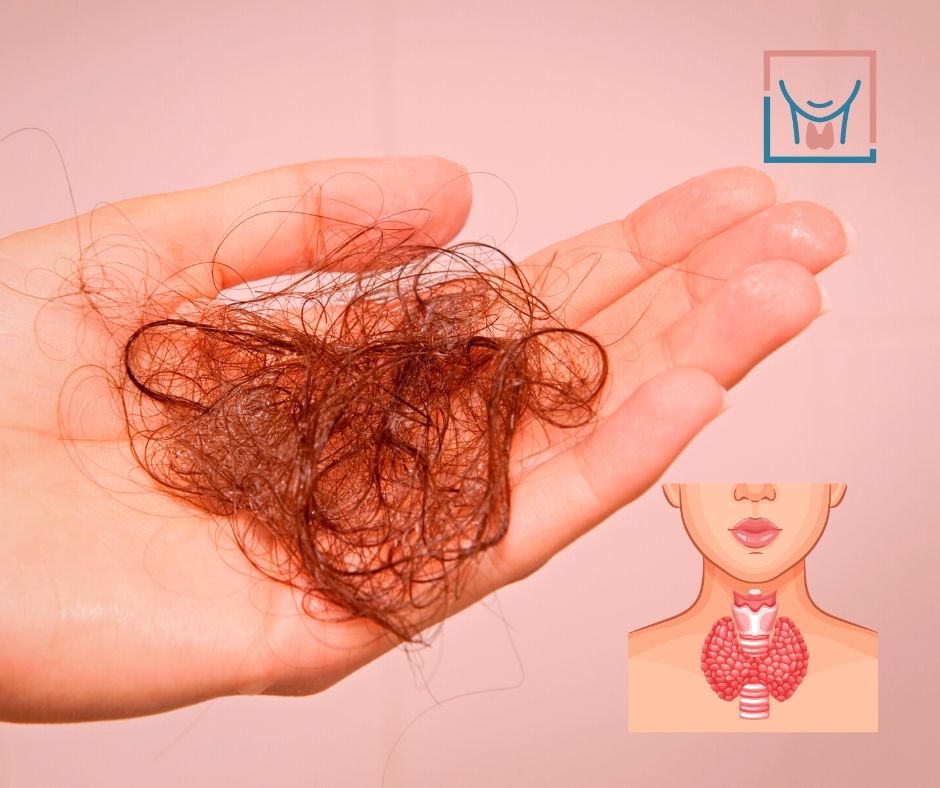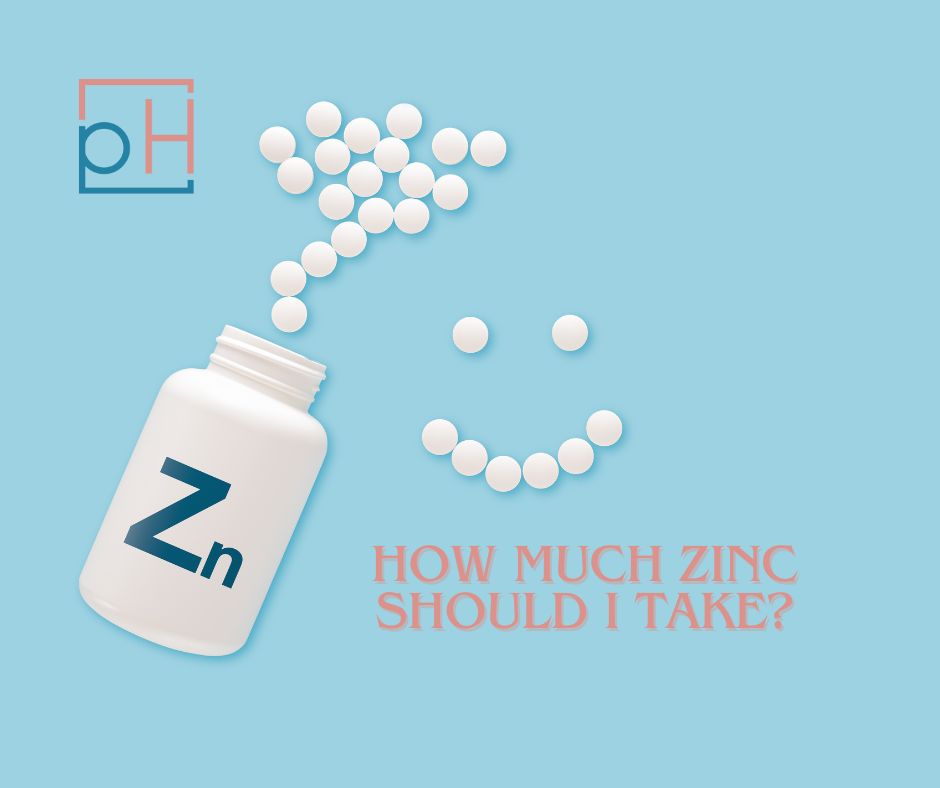If you or a loved one is diagnosed with Alzheimer’s disease, or is concerned about cognitive decline, it can be helpful to look at Alzheimer’s statistics and facts that clarify the situation.
Alzheimer’s can be a scary disease. But understanding the facts about this condition can give you confidence in how to move forward as you or a loved one faces the reality of Alzheimer’s dementia.
Below, we also talk about preventing Alzheimer’s, including PrimeHealth’s revolutionary Prevention Program based on the research of internationally renowned Dr. Dale Bredesen.
Want to prevent Alzheimer’s using a plan that works… without breaking the bank? Get our guide to the Bredesen Protocol on a budget for $29.
What is Alzheimer’s disease?
Alzheimer’s disease is a fatal form of dementia that leads to cognitive decline that goes beyond a normal part of aging, including memory problems and difficulty carrying out everyday tasks. In the later stages of Alzheimer’s disease, patients may become unable to perform even the simplest of basic functions, such as speaking or swallowing.
Alzheimer’s is the most common cause of dementia (in other words, the most common form of dementia), which is simply a set of cognitive decline symptoms.
Other common causes of dementia include:
- Vascular dementia
- Parkinson’s disease
- Dementia with Lewy bodies
- Huntington’s disease
Causes
Alzheimer’s disease is most likely caused by a combination of factors, including:
- Brain changes related to aging
- Genetic predispositions or other genetic markers
- Environmental influences
- Lifestyle factors
For quite some time, scientists blamed a buildup of beta-amyloid plaque and tau tangles (neurofibrillary tangles) in certain parts of the brain.
However, the answer is not this cut and dry. It is not possible to identify a single direct cause for Alzheimer’s because it’s a multifactorial illness.
The changes in the brain, including plaque, tau tangles, and inflammation, associated with Alzheimer’s lead to a loss of neurons and neuronal connections. This, in turn, causes a progressive loss of brain function.
Recent research suggests inflammation, not plaque in the brain, may be a driving factor in the development of Alzheimer’s.
History
Alzheimer’s disease was identified in 1906 by Dr. Alois Alzheimer.
He recognized changes in the brain tissue of a woman (Auguste Deter) who had recently died of a mysterious mental illness, whose symptoms included language problems, delusions, and memory loss.
Unfortunately, for centuries, many individuals with Alzheimer’s were sent to insane asylums where they received horrible treatment.
Today, our medical community is much more advanced, ethical, and kind. Alzheimer’s patients often receive caregiving from family members or qualified healthcare professionals.
Prevalence
How common is Alzheimer’s disease? 44 million people live with Alzheimer’s disease worldwide, including more than 5 million Americans.
Alzheimer’s is most common in Western Europe, with North America close behind. It is least common in Sub-Saharan Africa, according to Alzheimer’s International.
10% of Americans older than 65 have Alzheimer’s disease. A third of Americans older than 85 have it. About half of people over the age of 85 suffer from Alzheimer’s.
The incidence of Alzheimer’s may be surprising. Each year, there are 53 new cases of Alzheimer’s disease per 1,000 people aged 65-74, 170 new cases at 75-84, and 231 new diagnoses over 85 years old.
Young-onset Alzheimer’s (also called early-onset dementia or working age dementia) is when someone is diagnosed with dementia symptoms before the age of 65 years old. About 5% of dementia cases occur in individuals younger than 65.
Whereas Alzheimer’s accounts for two-thirds of dementia cases in those 65 and older, Alzheimer’s only accounts for one-third of dementia cases in those younger than 65.
Stages
Alzheimer’s disease can be broken up into 7 stages:
- No impairment
- Very mild decline (or “mild cognitive impairment (MCI)”)
- Mild decline
- Moderate decline
- Moderately severe decline
- Severe decline
A 2016 scientific article defined the no impairment stage of Alzheimer’s as having demonstrable biomarkers of Alzheimer’s disease (i.e., beta-amyloid plaque and tau tangles), yet exhibiting no obvious symptoms. Diagnosing Alzheimer’s before symptoms present may greatly help prevention and treatment.
The preclinical stage of Alzheimer’s disease corresponds with this first stage.
Very mild decline stage of Alzheimer’s disease results in slight but noticeable changes in memory and thinking skills. Although MCI doesn’t always lead to Alzheimer’s, it is the next stage after preclinical Alzheimer’s. It isn’t always possible to tell the difference between this stage of Alzheimer’s and normal age-related memory loss.
Subjective cognitive decline (SCD) is a self-observed decline in cognitive function that may take place during stages 1 or 2. You might notice problems with forgetfulness and confusion, but not all the time. This is a good reason to seek a diagnosis or bring up the issue with a loved one.
In the mild decline stage of Alzheimer’s disease, an individual can still take care of themselves and even take part in social events. However, the individual suffers from mild dementia symptoms, such as brief lapses in short-term memory, forgetting the name of an acquaintance, or losing personal possessions.
At this point, friends and family may begin to notice cognitive problems. A doctor can detect these impairments with memory tests.
The second and third stages of Alzheimer’s are associated with age-associated memory impairment and mild cognitive impairment (MCI). Up to 20% of adults over the age of 65 have MCI, according to the Alzheimer’s Association.
When a patient progresses to moderate decline in Alzheimer’s disease, memory changes are more obvious. Personal finances may become a major problem, patients may forget important details about their own lives, and short-term memory loss becomes a consistent problem.
During moderately severe decline in Alzheimer’s disease, caregivers may need to help patients with personal hygiene, getting dressed, and remembering where they are. Typically, people in this stage still remember some simple habits and facts, such as how to use the bathroom or the names of members of their immediate family.
The next stage, severe decline in Alzheimer’s disease, is marked by nearly constant confusion and the need for round-the-clock care. Patients may no longer be able to control their own urination or defecation and may not understand where they are. Only a few family members are still recognizable, if that.
In the very severe decline of Alzheimer’s disease, a patient suffers from debilitating dementia symptoms, such as the inability to speak more than a few words, immobility, difficulty eating, and dramatic memory loss. They may forget how to swallow and how to respond at all to the environment around themselves.
Mortality
How many people die from Alzheimer’s every year? In the United States, over 122,000 people died due to Alzheimer’s disease in 2018.
In 2000, the rate of deaths from Alzheimer’s and dementia was 30.5 deaths per 100,000 people.
In 2020, the Alzheimer’s and dementia death rate has increased to 66.7 deaths per 100,000 people, according to the National Center for Health Statistics.
Worldwide, the number of people estimated to die each year due to Alzheimer’s and dementia is 700,000.
Alzheimer’s kills more people than breast cancer and prostate cancer combined.
How does Alzheimer’s lead to death? Alzheimer’s disease can indirectly lead to death in several ways. The number one cause of death in Alzheimer’s patients (primarily late-stage) is aspiration pneumonia caused by Alzheimer’s complications.
Other common causes of death in Alzheimer’s patients include:
- Cardiovascular diseases
- Pulmonary embolism
- Cachexia
- Dehydration
- Injury due to falling
The mortality rate of Alzheimer’s disease by country:
- In the United States, Alzheimer’s disease is the 6th leading cause of death. Alzheimer’s may be the #3 cause of death among older people ages 65 and up, according to the National Institute on Aging. 20 years ago, Alzheimer’s was the 12th leading cause of death, so its prevalence has risen drastically in the past few decades.
- In England and Wales, Alzheimer’s or other dementias are the number one leading cause of death.
- Across the world, Alzheimer’s and dementia are listed as the 2nd leading cause of death in many countries, such as Sweden, Norway, Iceland, Finland, Turkey, Lebanon, Ireland, Switzerland, and Australia.
How long does a person live after being diagnosed with Alzheimer’s? People with Alzheimer’s typically live for 3-11 years after being diagnosed with Alzheimer’s, depending on the age of diagnosis, genetics, and other lifestyle factors.
Research done at Johns Hopkins School of Public Health indicates that the average life expectancy after a diagnosis at age 65 is 8.3 years. For people diagnosed at age 90, it is 3.4 years.
Treatment
How effective is the conventional treatment for Alzheimer’s? Conventional treatments for Alzheimer’s disease are not very effective, but many families and doctors feel it is their only choice.
All FDA-approved Alzheimer’s drugs have met a standard of efficacy. This means they have improved certain disease markers in clinical trials to be considered “clinically significant”, but these improvements are often not noticeable in the daily lives of Alzheimer’s patients.
Many families and physicians think the cost of Alzheimer’s drugs is too high for the meager — sometimes unnoticeable — benefit.
How many medications are used for Alzheimer’s? There are 4 medications approved by the FDA to treat Alzheimer’s symptoms. None are a cure. All of them come with potential side effects and a relatively low effectiveness rate.
The 4 FDA-approved Alzheimer’s drugs are:
- Donepezil (Aricept) is a cholinesterase inhibitor (CI) is the only drug approved for late stage Alzheimer’s, as well as mild to moderate stage Alzheimer’s.
- Galantamine (Razadyne) is a CI that may cause dizziness and decrease your appetite.
- Rivastigmine (Exelon) is a CI with the most prevalent side effects. It is available as a capsule, a liquid, or a patch.
- Memantine (Namenda) is an N-methyl-d-aspartate (NMDA) receptor antagonist that blocks NMDA receptors that oppose glutamate activity.
Tacrine (Cognex) is a CI that was taken off the market in 2013 due to links with liver toxicity. It was the first medication approved for treating Alzheimer’s symptoms in 1993.
Namzaric is an FDA-approved treatment for Alzheimer’s symptoms. It is a combination of donepezil and memantine.
What are the side effects of Alzheimer’s drugs? We’ve compiled all the side effects of the 4 FDA-approved Alzheimer’s drugs:
- Side effects of donepezil: fatigue, nausea, vomiting, diarrhea, muscle cramps, weight loss
- Side effects of galantamine: headache, nausea, vomiting, diarrhea, suppressed appetite, dizziness
- Side effects of rivastigmine: nausea, vomiting, diarrhea, weight loss, indigestion, muscle weakness
- Side effects of memantine: headache, diarrhea, constipation, confusion, dizziness
- Side effects of Namzaric: headache, nausea, vomiting, diarrhea, dizziness, anorexia
Are there any effective alternative treatments for Alzheimer’s? Alternative treatments for Alzheimer’s do not have to go through the FDA’s rigorous approval process, so you are running a risk of an unsafe or ineffective treatment if you go with one of these alternative treatments.
However, several alternative treatments for dementia and Alzheimer’s have shown promise in clinical trials:
- Omega-3 fatty acids
- Ginkgo biloba
- Huperzine A
- Caprylic acid, tested as Ketasyn, marketed as Axona
- Tramiprosate, tested Alzhemed, marketed as ViviMind
Risk Factors
Who is at the highest risk of Alzheimer’s? You are at greater risk of Alzheimer’s if you are over the age of 65, female, and have a family history of dementia.
Which gender gets Alzheimer’s more often? Women develop Alzheimer’s twice as often as men. This may be, in part, due to women’s propensity to live 2-3 years longer than their male counterparts.
What are the common risk factors of Alzheimer’s disease?
- Older age — Most Alzheimer’s patients are older adults (over 65 years old).
- Female gender — Two-thirds of individuals with Alzheimer’s are women.
- Genetics — If you have a family history of dementia, you are at higher risk of developing Alzheimer’s. However, experts estimate that only 1% of cases of Alzheimer’s are directly caused by genetics as a primary factor.
- Heart health — When the cardiovascular system isn’t in top health, brain health may suffer. The main cardiovascular issue that leads to Alzheimer’s (or vascular dementia) is stroke. Other heart health issues that are risk factors include high blood pressure and high cholesterol.
- Ethnicity — Hispanic and African American individuals are at higher risk than white individuals, though scientists are not sure exactly why. It may be due to these ethnicities’ higher risk of heart disease.
- Head injury — There is a proven link between head injury and the future development of dementia.
- Unhealthy diet — Scientists recommend eating healthier can reduce the risk of Alzheimer’s.
- Exercise — Exercising your body is an important part of healthy aging.
- Excess alcohol — Drinking a lot of alcohol increases your risk of Alzheimer’s and related dementias.
- Tobacco use — You should avoid tobacco for many reasons, including Alzheimer’s risk.
- Solitude — Maintaining a robust social life can reduce your risk of Alzheimer’s. Living a life of solitude makes dementia more likely.
Financial Burden
- Alzheimer’s and dementia care in the United States costs nearly $300 billion each year, with more than $175 billion covered by Medicare and Medicaid.
- By 2050, costs associated with all types of dementia (Alzheimer’s is the most common type) could go over $1 trillion.
- Unpaid caregivers of people with Alzheimer’s disease or other dementias (usually family and friends) gave an estimated 18.5 billion hours of unpaid care in 2018. These care costs have been valued at $234 billion.
- More than 1 in every 6 dementia caregivers had to quit their job for long-term care.
- One-fourth of family caregivers care for someone with Alzheimer’s at the same time they take care of a child or grandchild. This is called a “sandwich generation”.
- The lifetime cost of care for a person with Alzheimer’s is estimated at over $250,000.
Prevention
Prevention of Alzheimer’s disease usually involves identifying risk factors and lifestyle changes that can reduce those risk factors for developing dementia and Alzheimer’s.
12 tips for how to prevent Alzheimer’s:
- Eat a healthy diet
- Reduce daily stress levels
- Exercise regularly
- Quit smoking
- Avoid excess alcohol
- Get high-quality sleep
- Lower high blood pressure
- Maintain a healthy social life
- Avoid toxin exposure
- Consider dietary supplements, recommended by a healthcare provider
- Ask your doctor about brain stimulation
- Continue to learn new things (e.g., learn a new language, do puzzles, solve riddles, read new books, read new music)
Dr. Dale Bredesen is an internationally recognized expert in Alzheimer’s disease prevention. Yet, many conventional doctors still do not know about his groundbreaking Alzheimer’s research.
He spent decades in a lab, trying to find the drug that would cure Alzheimer’s. What he found was the underlying reason that beta-amyloid protein built up in the brains of Alzheimer’s patients.
Through his research, he discovered 36 lifestyle factors that contributed to beta-amyloid buildup, one of the direct causes of Alzheimer’s.
He grouped these 36 risk factors into 6 subcategories:
- Inflammatory (hot) — caused by chronic inflammation
- Atrophic (cold) — caused by reductions in nutrients, hormones, and trophic support — for example, estradiol, progesterone, testosterone, vitamin D, pregnenolone, thyroid, etc.
- Glycotoxic (sweet) — basically a combination of “Inflammatory” and “Atrophic”
- Toxic (vile) — caused by depression, stress, toxin exposure
- Vascular (pale) — caused by poor cardiovascular health and/or heart disease
- Traumatic (dazed) — caused by traumatic head injury, typically multiple head injuries
Interestingly, these categories align with Ayurvedic approaches to defining the root of disease (the words in parentheses above).
A qualified healthcare professional can identify which subcategory (or categories) of lifestyle factors best applies to you, which allows him or her to develop a lifestyle program to address those underlying factors.
Dr. Bredesen has published some ground-breaking Alzheimer’s research in the past few years. In his first study of this approach, 9 out of 10 Alzheimer’s patients showed improvement. A subsequent study observing 100 patients also showed similar improvement.
According to Dr. Bredesen’s 2016 paper published in Aging, 10% of Alzheimer’s patients he examines suffer from mold toxicity. PrimeHealth has found some amount of mold toxicity is present in the vast majority of Alzheimer’s patients we see.
Lifestyle changes needed to improve cognitive function in Alzheimer’s patients are grouped into 7 categories, called the Bredesen Seven:
- Diet
- Exercise
- Sleep
- Stress
- Toxins
- Dietary supplements
- Brain stimulation
Dr. Bredesen clarifies, “this is not a cure for Alzheimer’s.” It is often an effective preventative approach that typically improves cognitive function in a majority of patients.
In Dr. Bredesen’s experience since he started this approach, over 90% of his patients have seen cognitive decline slow or stop completely.
Want to prevent Alzheimer’s using a plan that works… without breaking the bank? Get our guide to the Bredesen Protocol on a budget for $29.
Sources
- Gustafson, C. (2015). Dale E. Bredesen, MD: Reversing Cognitive Decline. Integrative Medicine: A Clinician’s Journal, 14(5), 26. Full text: https://www.ncbi.nlm.nih.gov/pmc/articles/PMC4712873/
- Sartori, A. C., Vance, D. E., Slater, L. Z., & Crowe, M. (2012). The impact of inflammation on cognitive function in older adults: Implications for health care practice and research. The Journal of Neuroscience Nursing, 44(4), 206. Full text: https://www.ncbi.nlm.nih.gov/pmc/articles/PMC3390758/
- Ganguli, M., Dodge, H. H., Shen, C., & DeKosky, S. T. (2004). Mild cognitive impairment, amnestic type: an epidemiologic study. Neurology, 63(1), 115-121. Abstract: https://pubmed.ncbi.nlm.nih.gov/15249620/
- Casey, D. A., Antimisiaris, D., & O’Brien, J. (2010). Drugs for Alzheimer’s disease: are they effective?. Pharmacy and Therapeutics, 35(4), 208. Full text: https://www.ncbi.nlm.nih.gov/pmc/articles/PMC2873716/
- Shinto, L., Quinn, J., Montine, T., Dodge, H. H., Woodward, W., Baldauf-Wagner, S., … & Kaye, J. (2014). A randomized placebo-controlled pilot trial of omega-3 fatty acids and alpha lipoic acid in Alzheimer’s disease. Journal of Alzheimer’s disease, 38(1), 111-120. Full text: https://www.ncbi.nlm.nih.gov/pmc/articles/PMC3886557/
- Janßen, I. M., Sturtz, S., Skipka, G., Zentner, A., Garrido, M. V., & Busse, R. (2010). Ginkgo biloba in Alzheimer’s disease: a systematic review. Wiener Medizinische Wochenschrift, 160(21-22), 539-546. Abstract: https://pubmed.ncbi.nlm.nih.gov/21170694/
- Yang, G., Wang, Y., Tian, J., & Liu, J. P. (2013). Huperzine A for Alzheimer’s disease: a systematic review and meta-analysis of randomized clinical trials. PloS one, 8(9), e74916. Full text: https://www.ncbi.nlm.nih.gov/pmc/articles/PMC3781107/
- Sharma, A., Bemis, M., & Desilets, A. R. (2014). Role of medium chain triglycerides (Axona®) in the treatment of mild to moderate Alzheimer’s disease. American Journal of Alzheimer’s Disease & Other Dementias®, 29(5), 409-414. Full text: https://journals.sagepub.com/doi/full/10.1177/1533317513518650
- Aisen, P. S., Gauthier, S., Ferris, S. H., Saumier, D., Haine, D., Garceau, D., … & Sampalis, J. (2011). Tramiprosate in mild-to-moderate Alzheimer’s disease–a randomized, double-blind, placebo-controlled, multi-centre study (the Alphase Study). Archives of medical science: AMS, 7(1), 102. Full text: https://www.ncbi.nlm.nih.gov/pmc/articles/PMC3258678/
- Shah, T. M., Weinborn, M., Verdile, G., Sohrabi, H. R., & Martins, R. N. (2017). Enhancing cognitive functioning in healthly older adults: a systematic review of the clinical significance of commercially available computerized cognitive training in preventing cognitive decline. Neuropsychology Review, 27(1), 62-80. Full text: https://www.researchgate.net/profile/Michael_Weinborn/publication/312389475_Enhancing_Cognitive_Functioning_in_Healthly_Older_Adults_a_Systematic_Review_of_the_Clinical_Significance_of_Commercially_Available_Computerized_Cognitive_Training_in_Preventing_Cognitive_Decline/links/59dc7ce0458515e9ab4c658a/Enhancing-Cognitive-Functioning-in-Healthly-Older-Adults-a-Systematic-Review-of-the-Clinical-Significance-of-Commercially-Available-Computerized-Cognitive-Training-in-Preventing-Cognitive-Decline.pdf
- Bredesen, D. E., & Rao, R. V. (2017). Ayurvedic profiling of alzheimer’s disease. Altern Ther Health Med, 23(3), 46-50. Abstract: https://pubmed.ncbi.nlm.nih.gov/28236613/
- Bredesen, D. E. (2014). Reversal of cognitive decline: a novel therapeutic program. Aging (Albany NY), 6(9), 707. Full text: https://www.ncbi.nlm.nih.gov/pmc/articles/PMC4221920/
- Bredesen, D. E., Sharlin, K., Jenkins, D., Okuno, M., Youngberg, W., Cohen, S. H., … & Hathaway, A. (2018). Reversal of cognitive decline: 100 patients. J Alzheimers Dis Parkinsonism, 8(450), 2161-0460. Full text: https://www.researchgate.net/profile/Kenneth_Sharlin2/publication/329063941_Reversal_of_Cognitive_Decline_100_Patients/links/5d965c00458515c1d391b494/Reversal-of-Cognitive-Decline-100-Patients.pdf
- Bredesen, D. E. (2016). Inhalational Alzheimer’s disease: an unrecognized—and treatable—epidemic. Aging (Albany NY), 8(2), 304. Full text: https://www.ncbi.nlm.nih.gov/pmc/articles/PMC4789584/

















